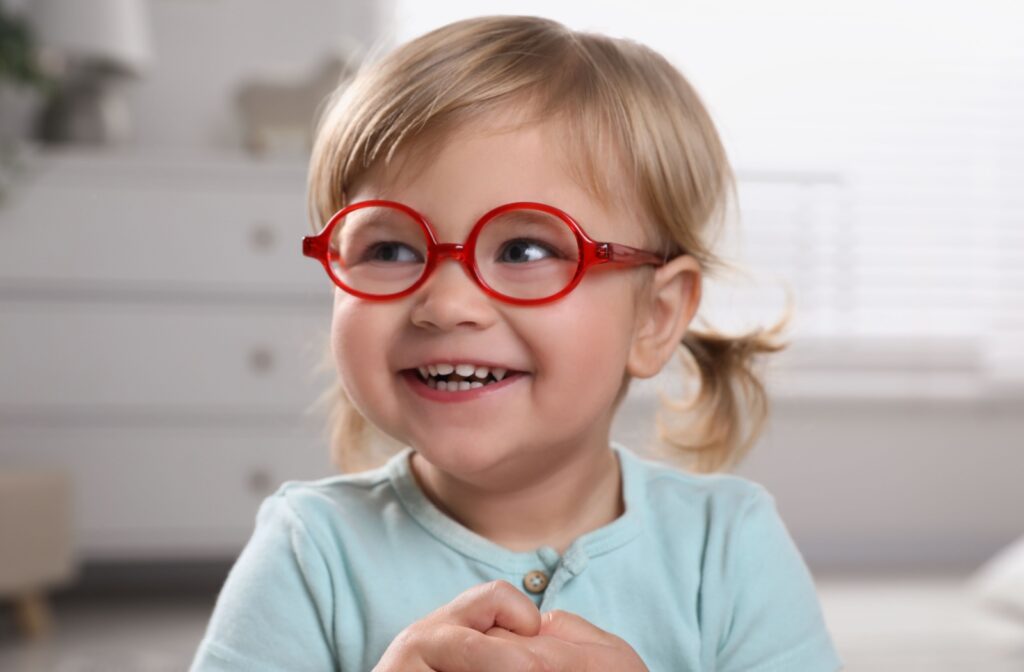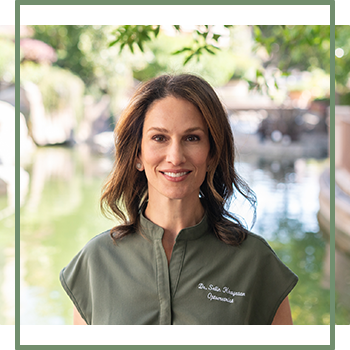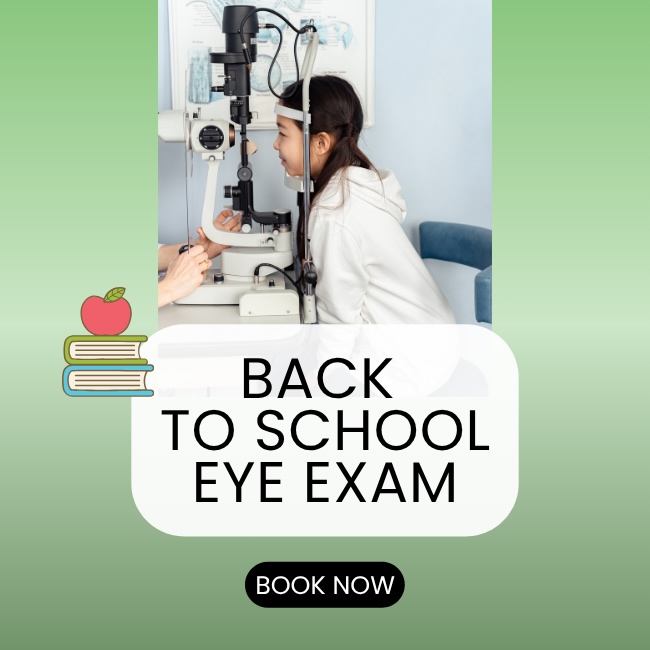We all want to stand by and support the health of the people we love. So, when children get their first pair of glasses, it’s normal to wonder if they can outgrow their vision concerns. Unfortunately, in myopia’s case, this isn’t very likely.
Myopia is a progressive refractive error that does not improve with age. Instead, it tends to progress, further stressing the eye and worsening vision, which can lead to long-term consequences down the line.
Fortunately, there are proactive measures we can use to slow myopia progression in children to preserve their sight and future eye health.
Why Does Myopia Progress?
Also known as nearsightedness, myopia is a common refractive error that begins during childhood. It alters the eye’s natural shape, which leads to blurry distance vision.
The eye’s shape plays a direct role in visual clarity. A normal eye with no refractive error is round. When incoming light enters the eye, it focuses precisely on the retina, resulting in clear, sharp vision at all distances.
An eye with myopia is longer. This means that, when light enters the eye, it fails to focus correctly, falling just short of the retina and causing blurry vision for far-away objects.
Myopia develops from two main factors:
- Genetics: Myopia can run in families. If one or both parents are nearsighted, there’s a higher chance their children will develop it too.
- Environmental Factors: Spending long hours on digital screens, reading up close for long periods, and less time spent outdoors have all been linked to myopia progression. Natural daylight plays a critical role in eye health, and its absence can exacerbate nearsightedness.
Although correcting myopia is easy with glasses or contact lenses, it doesn’t prevent myopia from progressing.
The eye grows rapidly during childhood and throughout the teenage years, which is why it’s normal for children’s vision to fluctuate. It isn’t until about age 20 that vision (and myopia) tends to stabilize. Some adults may experience a continued slow progression of myopia, albeit less dramatically than during their younger years.
With that said, stabilization doesn’t equal improvement. This is where myopia control therapies prove useful.
The Importance of Myopia Management
Myopia management extends far beyond just supporting vision; it also plays a vital role in protecting your overall eye health.
When myopia progresses, the eye’s physical shape continues to elongate. Along with worsening vision and a higher vision prescription, this stresses the delicate structures of the eye, increasing the risk of developing serious concerns down the line.
Here’s why managing myopia is essential:
- Reducing the Risk of Serious Eye Diseases: High levels of myopia (-6.00 diopters or greater) significantly increase the risk of conditions such as glaucoma, retinal detachment, and myopic macular degeneration later in life.
- Better Quality of Life: Even mild to moderate myopia can interfere with everyday activities like driving, playing sports, or even recognizing faces in the distance. Slowing myopia progression improves visual clarity and quality of life.
- Better Long-Term Outcomes: Slowing myopia progression early can lead to lower prescription strengths as people grow older, easing children’s dependence on thick lenses or specialized eyewear.
Patiently waiting for your child’s vision to stabilize isn’t the way to go. Studies suggest that even having mild to moderate myopia isn’t ideal. That’s why taking control of myopia when you can is the right course of action.
When it comes to myopia control, the sooner we begin, the better. Annual children’s eye exams allow us to identify myopia early and take action. Since children’s eyes are growing, this makes them more responsive to treatments, facilitating stronger visual outcomes for their future.

Introducing Myopia Control Therapies
We cannot alter or reverse the eye’s physical shape, but we can slow myopia’s progression. This is where myopia control therapies come in.
Managing myopia requires a tailored approach. We’ll evaluate your child’s vision, degree of myopia progression, and overall eye health to create a treatment plan that aligns with their needs.
Here’s a closer look at the myopia control therapies we offer:
Ortho-K Lenses
Orthokeratology, or ortho-k lenses, are specialty rigid (hard) contacts that are worn overnight. These lenses gently reshape the cornea while you sleep, providing clear vision during the day without the need for glasses or contacts.
Think of them as dental retainers for your eyes. When worn consistently, ortho-k lenses flatten the cornea, slowing eye elongation to help control myopia progression, while also correcting your vision.
What sets ortho-k apart from other control therapies is its efficacy in slowing myopia progression in young adults (up to age 29), along with children and teens.
MiSight® 1 Day Contact Lenses
MiSight 1 Day lenses are soft, single-use contact lenses specifically designed for children. They’re ideal for children 8-12 who are starting to show early signs of myopia.
These specialty lenses have a unique design with 2 distinct zones. One corrects myopia, while the other defocuses peripheral light. Defocusing alters how light falls on the retina, discouraging the eye from growing in ways that exacerbate myopia.
Low-Dose Atropine Drops
These eye drops are applied daily, showing promising results in slowing children’s myopia. Low concentrations of atropine relax certain eye muscles and change how the eye responds to nearby visual stimuli, helping control elongation.
Low-dose atropine drops, however, don’t correct vision, so they are generally recommended as part of a broader myopia management plan.
Support a Clearer Future
Although vision stabilizes during young adulthood, waiting to address myopia can lead to unnecessary challenges and risks. Effective therapies like ortho-k, MiSight lenses, and low-dose atropine provide proven ways to manage and slow myopia progression.
The sooner we start the journey to myopia control, the better. Taking proactive steps today can lead to a brighter, clearer future for your child’s visual health. Remember, myopia management is more than a solution; it’s a commitment to lifelong visual health. Why wait? Connect with Visual Expressions Optometry today and book an appointment




